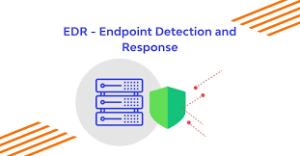EDR Security meaning solutions provide visibility and monitoring on endpoints, with advanced detection and capabilities to identify threats before they enter a network and tools to assist security teams quickly in responding to attacks.
EDR works similarly to flight data recorders in that it helps organizations detect cyberattacks before they become full-fledged breaches. Outsourced EDR services continuously monitor threat activity and alert teams of potential dangers.
Threat detection
Threat detection refers to identifying suspicious activity that could indicate cyberattacker activity. To maximize EDR technology solutions’ efficacy, they typically combine full endpoint visibility with behavioral analysis capabilities to detect Indicators of Compromise and Attack (IoCs and IoAs). Real-world data collected using EDR solutions are fed into predictive analytics algorithms, which then analyze behavior patterns against known threats to generate an alert for those potentially compromised devices.
Modern organizations rely heavily on their ability to detect ransomware and file-less malware attacks, which can have catastrophic repercussions for their businesses and are designed to bypass traditional security protections like antivirus software and firewalls.
Most EDR solutions use agents installed on local devices to monitor device environments and send this data back to a central hub for processing, where machine learning and artificial intelligence are employed to detect any suspicious activities or breaches. Security staff also benefit from having direct visibility into these events to take swift action should any indicators arise of a breach, including temporarily isolating endpoints with signs of compromise.
An effective EDR solution should filter out false positives and only escalate alerts that need human interaction to avoid alert fatigue. Furthermore, it should provide multiple response options, such as eradicating malicious files or quarantining hosts with infections; and provide security teams with an avenue to conduct forensic investigations on potential threats and share this data with intelligence systems.
Threat containment
EDR systems can detect and contain threats before they cause significant damage while preventing further attacks by isolating infected hosts from network activity. These capabilities are key for protecting against data breaches. Your team must develop an attack response playbook, with everyone understanding their role and testing its containment plan regularly.
EDR tools collect telemetry on all endpoints and send it back to a central system for analysis, giving security teams a complete picture of all endpoints and the overall security environment – and providing valuable insight into how threats have circumvented existing defenses.
An effective EDR solution provides continuous real-time monitoring and endpoint data analytics with a rule-based automated response, making it a critical component of any comprehensive cybersecurity strategy, particularly as remote work becomes more prevalent.
EDR solutions often integrate with global cyber threat intelligence databases for faster detection of malicious activity. These databases contain TTPs used by attackers against specific endpoints or networks, providing more rapid triage and response than would otherwise be the case – helping combat alert fatigue among information security staffers.
Threat intelligence
As attacks become more sophisticated, they can bypass signature-based detection systems. EDR solutions rely on threat intelligence to recognize the malicious activity, including technical indicators like malware hashes and C&C domains; contextualized attribution provides security teams with all the knowledge needed to understand threats’ behavior and manage threats more efficiently.
EDR solutions go beyond detecting threats by automating specific incident response tasks that can accelerate investigation and lessen security team workload. For example, an EDR solution might block connections to malicious domains, isolate endpoints from external threats, or quarantine files marked suspicious.
Many organizations leverage third-party threat intelligence services to enhance the efficacy of their EDR solutions. These services provide a vast collection of current threats that enables their EDR solutions to detect multilayered attacks and zero-day threats more accurately, and some even feature advanced investigative features with machine learning-powered features to automate and speed up investigation processes.
These new tools can integrate with global threat databases and cyber threat intelligence services, providing security teams with actionable intelligence that can increase visibility and productivity compared to siloed tools. Furthermore, these advanced detection and response capabilities help organizations detect advanced threats before they gain access to sensitive data.
Elimination
EDR (Endpoint Detection & Response) is a security layer that monitors endpoints to identify and mitigate risks, using visibility into file activity, user events, and perimeter telemetry data to detect abnormal behavior. EDR should not be considered a standalone solution but must instead be integrated with other security layers to reduce the risk of attacks against endpoints; its capabilities help restore infected endpoints to normal state after incidents occur; EDR tools combined with prevention-focused solutions like NGAV can offer more comprehensive protection of endpoint protection for endpoint protection overall.
